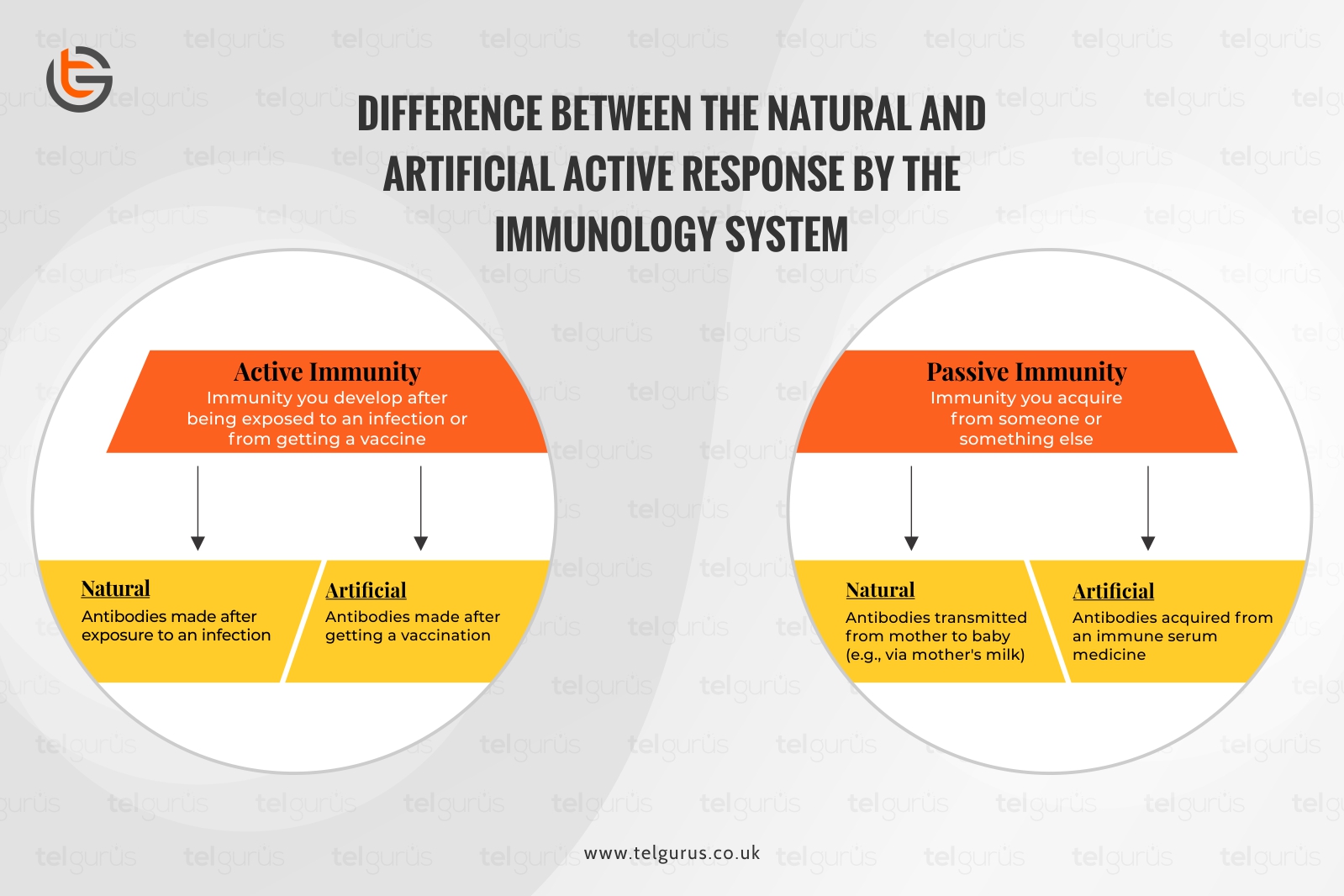Enrich your knowledge with our informative blogs
Difference between the natural and artificial active response by the immunology system.

A human body’s immunity can prevent the body from infections by destroying pathogens and foreign materials.
In the human body, the first defense against the pathogen is through the barriers like mucus layer, saliva, and skin known as innate immunity.
The second defense line is through phagocytes that are produced by innate immunity.
And the third defense line against infections is adaptive immunity.
However, the active and passive immunities are the adaptive type of immunities.
The primary difference between the active and passive immunity include:
Active immunity takes place when our own immune system is responsible for protecting the body from pathogens.
Passive immunity takes place when the body is protected from a pathogen by immunity acquired from someone else.
Differences between the active and passive immunity
| Active Immunity | Passive Immunity |
| This type is permanent and is generally produced by the antibodies in response to direct antigen contact. | This type lasts for a few months or weeks that is generally produced by the antibody’s introduction from outside. |
| There are no side effects of this type of immunity. | This may cause reactions |
| Such immunity doesn’t occur immediately. | This type develops immediately. |
| When the antigens enter the human body several specialized lymphocytes and antibodies are produced. | Here antibodies are introduced from the external sources. |
| This produces immunological memory | This doesn’t produce immunological memory |

Get your doubts resolved ON THE SPOT!
Make learning interesting and fun when the doubts are resolved instantly with the comfort of your home only at TEL Gurus.
Categories
Recent Posts
- List of the qualities you should look for in your tutors?
- What is the most useful formulas in math?
- Describe the process of eating to defecation of food?
- Difference between the natural and artificial active response by the immunology system.
- Explain the different circle theorems
- How are nerve cells adapted to their function?










